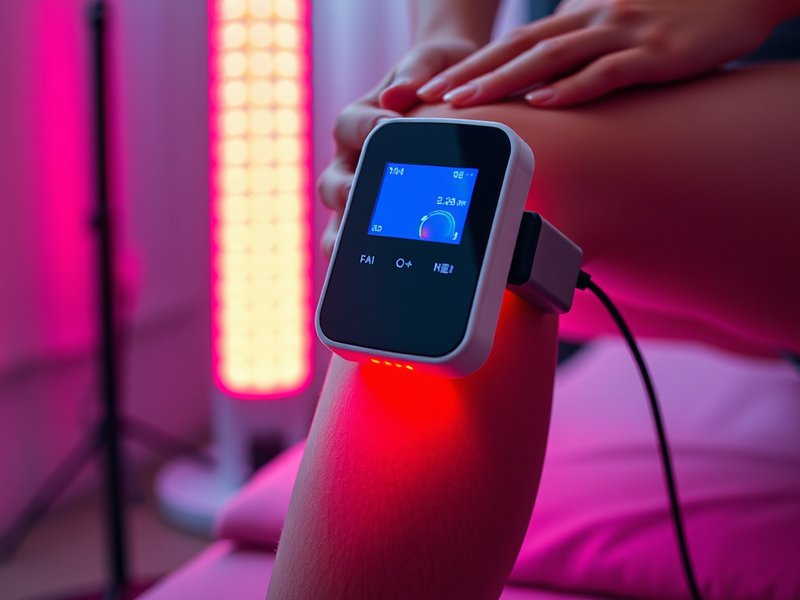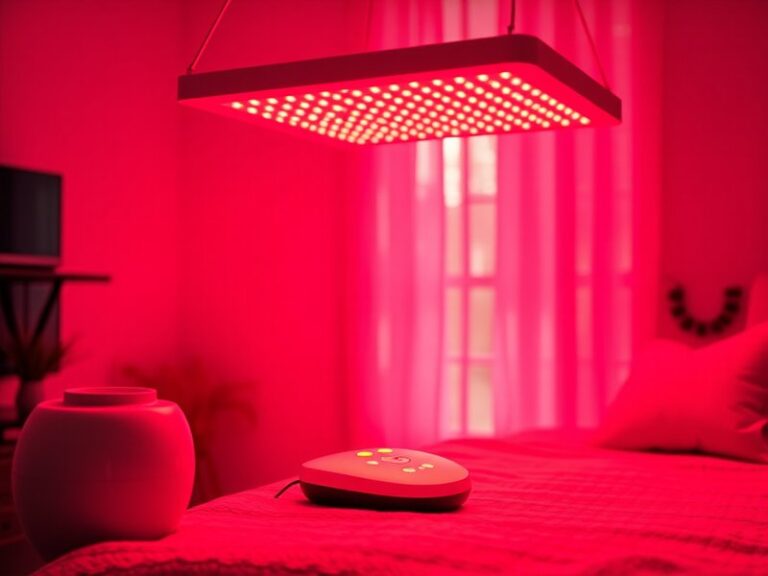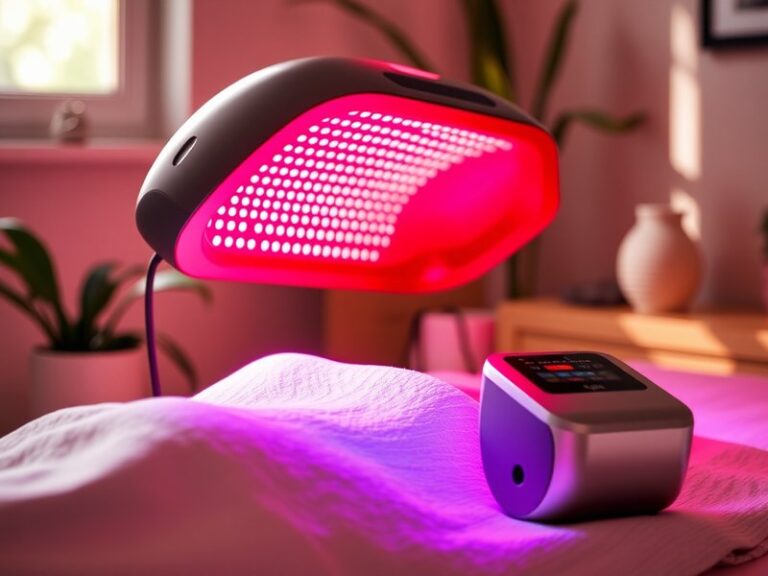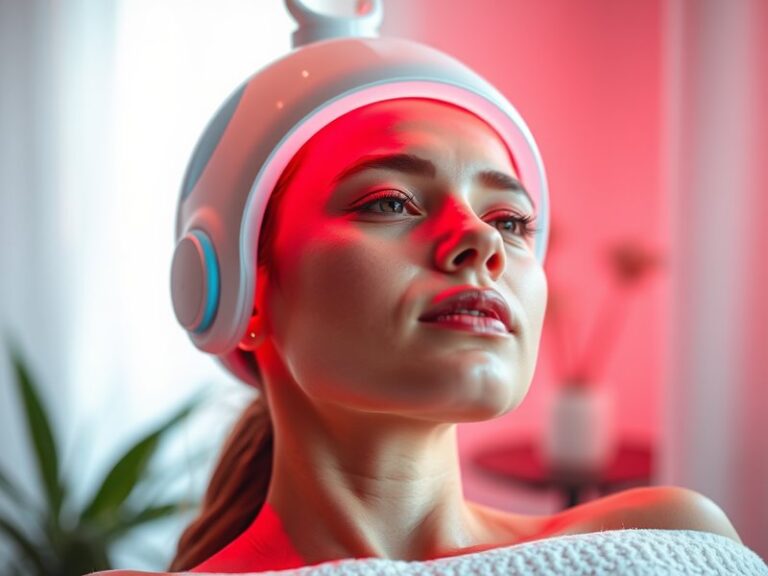Can Red Light Therapy Help Knee Pain?
Can Red Light Therapy Help Knee Pain?
Can innovative treatments like red light therapy make a difference in managing knee pain?
This article explores the potential benefits of red light therapy for alleviating knee pain. We will cover what red light therapy is, its benefits specifically for knee pain, considerations before starting treatment, alternatives available, and frequently asked questions to help you make an informed decision.
Key Takeaways
- Red light therapy may reduce inflammation and pain in the knee joint.
- It promotes healing and can enhance joint mobility.
- Always consult a healthcare professional before starting any new treatment for knee pain.
What is Red Light Therapy?
Red light therapy (RLT) involves the use of low-level wavelengths of light, typically in the red and near-infrared spectrum. It has garnered attention for its potential healing properties, aiding in tissue repair and reducing inflammation.
The therapy works by penetrating the skin and promoting biological processes within cells, which can enhance cellular energy production, stimulate collagen production, and improve circulation. Originally developed for skin conditions and rejuvenation, it has shown promise in various applications, including pain management and wound healing.
What are the Benefits of Red Light Therapy?
Understanding how red light therapy can benefit those with knee pain involves looking at its specific advantages.
Pain Reduction
Research indicates that red light therapy may help alleviate pain associated with conditions such as arthritis, joint injuries, and other inflammatory processes in the knee. Many users report a significant decrease in pain levels after regular treatment sessions.
Inflammation Control
Red light therapy can reduce inflammation in the knee joint, which is often a primary contributor to pain and limited mobility. By decreasing inflammatory markers, it fosters a healing environment that promotes recovery.
Enhanced Healing Process
Studies have shown that RLT may expedite the healing process for injuries and post-surgical recovery. By increasing energy production at the cellular level, it supports muscle and tissue repair after trauma, which can be especially beneficial for knee injuries.
Improved Joint Mobility
Patients may experience enhanced range of motion and flexibility in the knee joint as a result of consistent red light therapy sessions. This increased mobility can be valuable for individuals recovering from surgery or injury.
Non-Invasive and Safe Treatment
Red light therapy is a non-invasive treatment option with minimal side effects reported. This makes it accessible for many individuals who may be wary of pharmacological or surgical interventions.
Is it Possible to Use Red Light Therapy for Knee Pain?
Yes, many individuals effectively utilize red light therapy to manage knee pain. It is a straightforward process that can be done at home with devices specifically designed for this purpose or in specialized clinics.
What are the Advantages of Using Red Light Therapy?
Using red light therapy for knee pain offers several significant benefits.
Convenience of Home Use
Many red light therapy devices are available for home use. This convenience allows patients to incorporate treatment easily into their daily routines without frequent trips to a clinic.
Non-Invasive and Painless
Unlike surgical options, RLT is non-invasive and painless, making it suitable for patients who prefer to avoid invasive procedures or those who have not found relief from other treatments.
Complementary to Other Treatments
Red light therapy can be used in conjunction with other treatments, such as physical therapy, to enhance overall results and speed up the recovery process.
Dive into Red Light Therapy Frequency
What are the Disadvantages of Using Red Light Therapy?
While red light therapy has its benefits, there are some disadvantages and challenges that should be noted.
Variable Results
Not all individuals respond to red light therapy in the same way. While many report positive outcomes, others may not experience significant pain relief. It may require patience and multiple sessions to determine effectiveness.
Initial Cost of Devices
Investing in a quality red light therapy device can be costly upfront. Although prices have decreased, users should consider the financial commitment involved.
Time Commitment
For optimal results, users may need to dedicate time for regular treatments. Committing to a routine can be challenging for some individuals with busy schedules.
What are the Things to Consider Before Using Red Light Therapy?
Before beginning red light therapy, several considerations should be taken into account.
Consultation with a Healthcare Provider
It is essential to consult a healthcare professional or physical therapist to discuss the suitability of red light therapy for your specific condition, especially if you have underlying health issues.
Check out the latest Does RLT Heat Up?
Understanding Device Quality
When choosing a red light therapy device, it is crucial to invest in one that meets industry standards for effectiveness. Research different brands and read reviews to ensure you select a reliable device.
Setting Realistic Expectations
While many have found relief from knee pain through red light therapy, setting realistic expectations regarding outcomes is vital. Results may take time, and it’s important to maintain a comprehensive approach to pain management.
What are the Alternatives to Red Light Therapy?
If red light therapy does not seem like the right option for you, several alternatives could assist with knee pain relief.
Physical Therapy
Working with a physical therapist can help improve strength and flexibility in the knee, addressing pain through customized exercise programs.
Acupuncture
Acupuncture is an ancient practice that may relieve pain in the knee and other joints by using thin needles to stimulate specific points in the body. Some individuals report significant pain reduction and increased mobility after sessions.
Heat and Cold Therapy
Simple home remedies like heat packs for stiffness and cold packs for inflammation can effectively manage knee pain. Rotating these therapies can provide targeted relief.
Over-the-Counter Pain Relievers
Nonsteroidal anti-inflammatory drugs (NSAIDs) can alleviate pain and reduce inflammation. It’s advisable to consult a healthcare provider before using them for prolonged periods.
Conclusion: Is it Recommended to Use Red Light Therapy?
Red light therapy presents a promising, non-invasive option for individuals suffering from knee pain. With various benefits, including pain reduction and improved healing, it may serve as an effective tool in pain management. However, outcomes can vary, and an individualized approach combined with professional guidance is recommended.
Frequently Asked Questions
Is red light therapy safe?
Yes, red light therapy is generally considered safe, with minimal side effects reported. However, it is best to discuss any concerns with a healthcare provider.
How long does each session of red light therapy last?
Typically, each session lasts around 10 to 20 minutes, but this can vary based on the device and the specific guidance of a healthcare provider.
How often should I use red light therapy for knee pain?
Many experts recommend starting with 2 to 3 sessions per week and adjusting based on personal response and advice from a healthcare professional.
Can I use red light therapy alone for knee pain?
While many experience benefits from red light therapy alone, it is most effective when combined with other treatments like physical therapy or medication, depending on the severity of the condition.
Are there specific devices recommended for knee pain?
When considering a device, look for those specifically designed for joint pain, with appropriate wavelength specifications. Consulting with professionals can also provide recommendations tailored to your needs.






